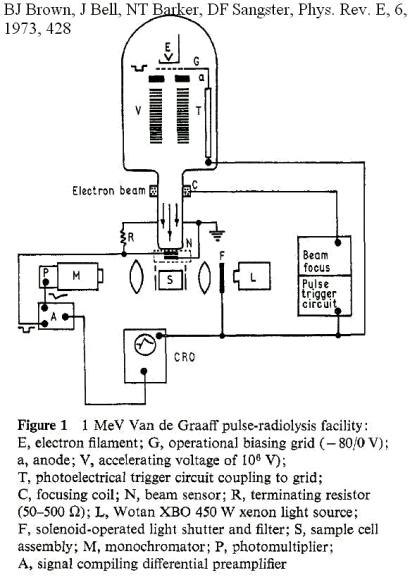|
Roots of radiation research plunge into the first quarter of the XXth century, after Roentgen and Becquerel discovered X-rays and the pioneering work of Marie Sklodowska Curie in radioactivity. It became soon clear that in order to harness these natural chemical processes reliably it was necessary to develop a proper understanding at the molecular level. The most direct way to achieve this understanding is to probe molecules directly with pulse methods. This became possible with the advent of two powerful techniques with which scientists may investigate the intermediates produced by the interaction of radiation with matter flash photolysis and pulse radiolysis. In the early sixties, Sangster (Figure 1) described a modified Van de Graaff machine, able to produce 2-5 MeV electrons with 1 µs pulses. Since then, several laboratories have been very actively working in the field and, at the beginning of the 1970's, many pulse radiolysis set-ups were routinely running worldwide. One of the great achievements in the early days of pulse radiation chemistry was the discovery of the hydrated electron by Hart and Boag in 1962. At the beginning pulse radiolysis and flash photolysis experiments followed parallel developments; however, the high cost of accelerators prevented their wide diffusion, especially in Europe. Most european countries do not have their own pulse radiolysis facilities.
|
 |






